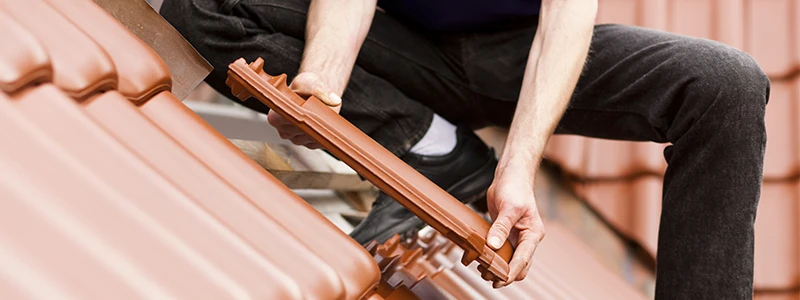How to become a Roofer

Roofers cover houses and other structures with roof tiles, slates, shingles or steel sheeting to form waterproof and durable surfaces.
Personal requirements for a Roofer
- Enjoy practical and manual activities
- Good sense of balance
- Good hand-eye coordination
- Willing to work at heights and outdoors
Education & Training for a Roofer
To become a roofer you usually have to complete an apprenticeship or traineeship. Entry requirements may vary, but employers generally require Year 10.
Additional information
When working at heights, industry standards require roofers to complete a Work Safely at Heights short course provided by a Registered Training Organisation (RTO). All those who work in the construction industry must undergo safety induction training and be issued with a Construction Induction Card (CIC).
Duties & Tasks of a Roofer
Roofers:
- Examine drawings, specifications and worksites to determine materials required
- Assess risks
- Erect ladders and tile elevators
- Erect and dismantle restricted-height scaffolding
- Place roofing underlays over eaves and secure them by nailing or stapling these to roofs
- Correctly space and nail wooden strips (battens) across the roof rafters on which the tiles or other roofing material will be placed
- Measure and cut roofing material to fit around vents, chimney edges and the hips and valleys of the roof
- Fix roof flashings (weatherproof covering)
- Fix the ridge caps and gable ends with cement mortar or tech screws
- Apply protective paint coating systems
- Clear the roof of debris after job completion.
Tasks
- Studying drawings, specifications and work sites to determine materials required
- Fixing edge and ridge tiles in cement mortar
- Sizing and cutting roofing material to fit around vents, chimney edges, corners and ridges
- Aligning starter rows of roofing material with edges of roofs, securing with wire, staples and nails, and overlapping successive layers of tiles
- Caulking and flashing exposed nail heads to prevent leaks
- Slipping roofing material under pre-fabricated flashing and nailing it down
- Placing and securing waterproof sheets over eaves
- Erecting ladders and scaffolds
- Nailing and stapling roofing underlay to roofs
Working conditions for a Roofer
Roofers' work involves a lot of bending, climbing and lifting. They work outdoors, at heights and in all weather conditions.
Employment Opportunities for a Roofer
Many roofers are self-employed or work for small companies that supply and fix roofs. They are usually subcontracted to roofing manufacturers on a semi-permanent basis. Roofers are also directly employed by manufacturing companies and by state, territory or local government bodies concerned with public works.
Specializations
par - Roofers may specialise in tiling or installing new roofs, repairing existing roofs or removing old roofs and replacing them. Roofing may be divided into the following categories:
- Roof Tiler - works with clay tiles, stone slates or wooden shingles and overlaps the tiles in successive layers to form waterproof roofs.
- Metal Roof Plumber - works with metal, polycarbonate, fibreglass, glass malthoid sheets and waterproof membranes. Metal roof plumbers also install roof mesh, insulation, gutters and downpipes, rainwater tanks, equipment pumps and roof plumping systems.
Roofer
Roofers cover houses and other structures with roof tiles, slates, shingles or steel sheeting to form waterproof and durable surfaces.

Average age
30

Future Growth
Positive

Gender Share
1% female

Average full-time
42 hours

Weekly Pay
N/A

Skill level rating
Medium skill

Unemployment
Lower unemployment

Full-Time Share
89%

Employment Size
10,400

Employment by state
ACT: 1.5%
NSW: 36.2%
NT: 1.3%
QLD: 22.7%
SA: 5.6%
TAS: 1.3%
VIC: 23.4%
WA: 8.0%
Age brackets
15-19: 8.5%
20-24: 18.3%
25-34: 29.8%
35-44: 18.9%
45-54: 13.8%
55-59: 5.3%
60-64: 3.7%
65 and Over: 1.7%
Education level
Advanced Diploma/Diploma: 1.5%
Bachelor degree: 0.9%
Below Year 10: 0%
Certificate III/IV: 57.9%
Post Graduate/Graduate Diploma or Graduate Certificate: 0.1%
Year 10 and below: 21%
Year 11: 5.8%
Year 12: 12.7%
Years 11 & 10: 29.9%

